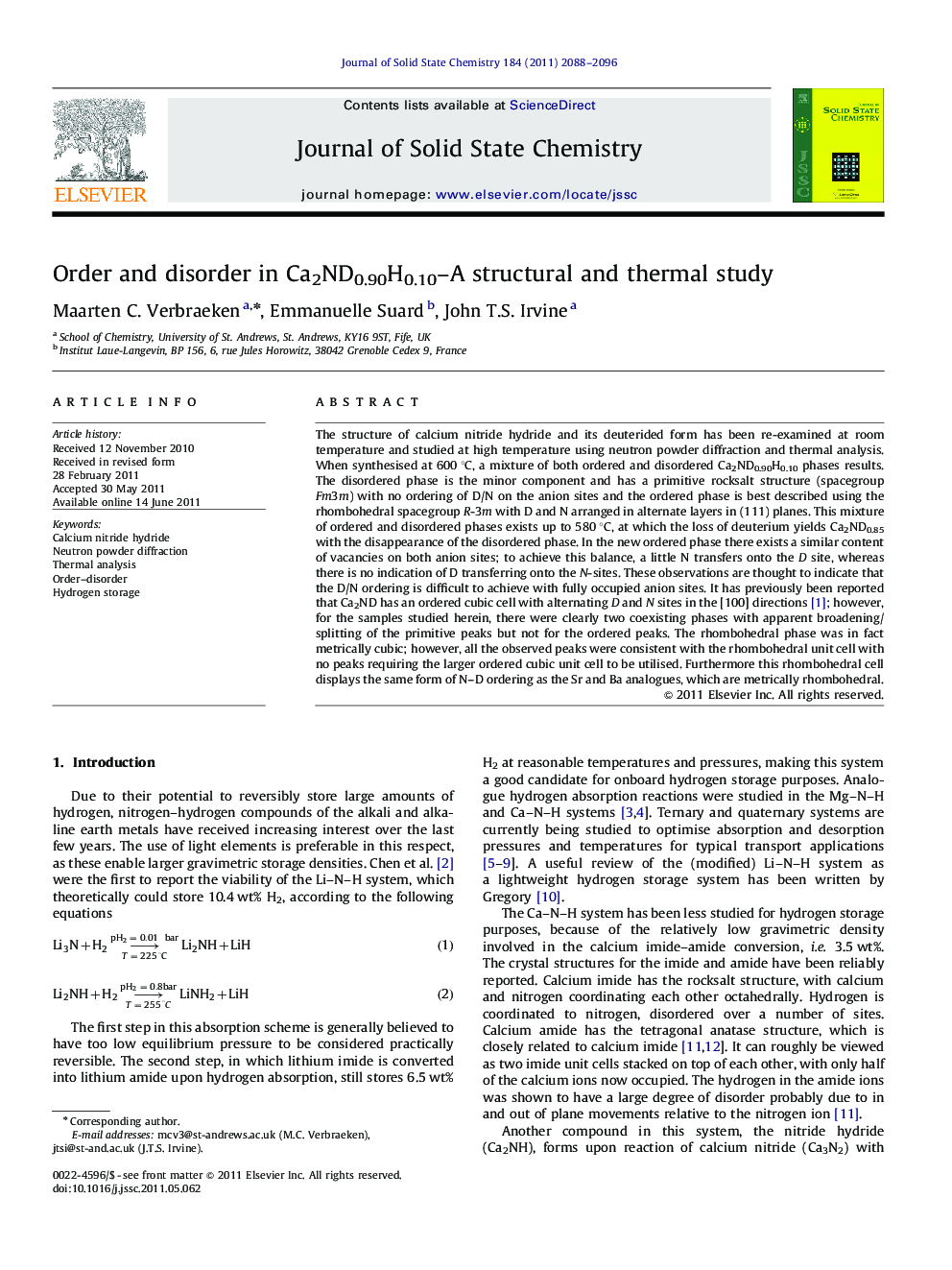| Article ID | Journal | Published Year | Pages | File Type |
|---|---|---|---|---|
| 1330701 | Journal of Solid State Chemistry | 2011 | 9 Pages |
The structure of calcium nitride hydride and its deuterided form has been re-examined at room temperature and studied at high temperature using neutron powder diffraction and thermal analysis. When synthesised at 600 °C, a mixture of both ordered and disordered Ca2ND0.90H0.10 phases results. The disordered phase is the minor component and has a primitive rocksalt structure (spacegroup Fm3m) with no ordering of D/N on the anion sites and the ordered phase is best described using the rhombohedral spacegroup R-3m with D and N arranged in alternate layers in (111) planes. This mixture of ordered and disordered phases exists up to 580 °C, at which the loss of deuterium yields Ca2ND0.85 with the disappearance of the disordered phase. In the new ordered phase there exists a similar content of vacancies on both anion sites; to achieve this balance, a little N transfers onto the D site, whereas there is no indication of D transferring onto the N-sites. These observations are thought to indicate that the D/N ordering is difficult to achieve with fully occupied anion sites. It has previously been reported that Ca2ND has an ordered cubic cell with alternating D and N sites in the [100] directions [1]; however, for the samples studied herein, there were clearly two coexisting phases with apparent broadening/splitting of the primitive peaks but not for the ordered peaks. The rhombohedral phase was in fact metrically cubic; however, all the observed peaks were consistent with the rhombohedral unit cell with no peaks requiring the larger ordered cubic unit cell to be utilised. Furthermore this rhombohedral cell displays the same form of N–D ordering as the Sr and Ba analogues, which are metrically rhombohedral.
Graphical abstractCa2ND0.90H0.10 forms a mixture of ordered and disordered phases when synthesised at 600 °C. The ordered phase disappears at high temperature upon release of structural deuterium/hydrogen, leaving a single, partially disordered phase.Figure optionsDownload full-size imageDownload as PowerPoint slideResearch highlights► Emergence of mixture of ordered and disordered phases at synthesis conditions used. ► Disordered phase disappears at high temperature, leaving partially ordered phase. ► Suggestion of ambiguity in anion ordering scheme.
